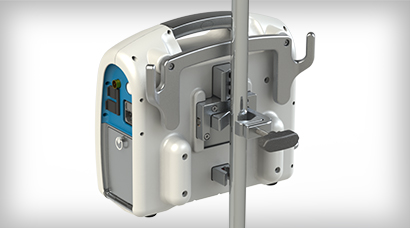Wound Treatment Device

The Challenge
This medical device is used to reduce the swelling in severe wounds to the legs and arms. It works by drawing a gentle vacuum on several porous catheters that are inserted into the patient's leg near the wound. The vacuum draws out fluid and reduces pressure on muscles. Without this, the patient's muscles can die causing serious complications (Compartment Syndrome).
The device is designed to have a hot swap battery change capability, as it travels with the patient and is rated for fixed wing and rotor aircraft.
The current treatment for severe limb wounds is a 12" incision in the patient's leg to relieve swelling pressure. This adds significant time for recovery and greater chance for infection and patient pain. This device is intended to be used in civilian and military markets. The device is designed to have a hot swap battery change capability, as it travels with the patient and is rated for fixed wing and rotor aircraft. The back of the device has several mounting options, allowing it to attach to a standard IV pole, a military litter cot, or a standard hospital bed using expanding hooks.
The Solution
Pongratz Engineering was responsible for design of sheet metal, machined, and plastic parts. All internal components were laid out and PCB board outlines were determined. A partner industrial designer was then able to generate the external "look" of the device while an electrical engineering partner generated the PCB design, software, and firmware. Pongratz Engineers then integrated the plastic, machined, and compiled sheet metal parts into a functioning whole. Pongratz Engineering fully documented this device, which included: BOM, part, and assembly drawings. An assembly procedure was also written to aid in the transition of the device to production.

The first units were made using a cast urethane process for the exterior case. The units were used to conduct field tests. Pongratz Engineering continues to provide support for this product.
